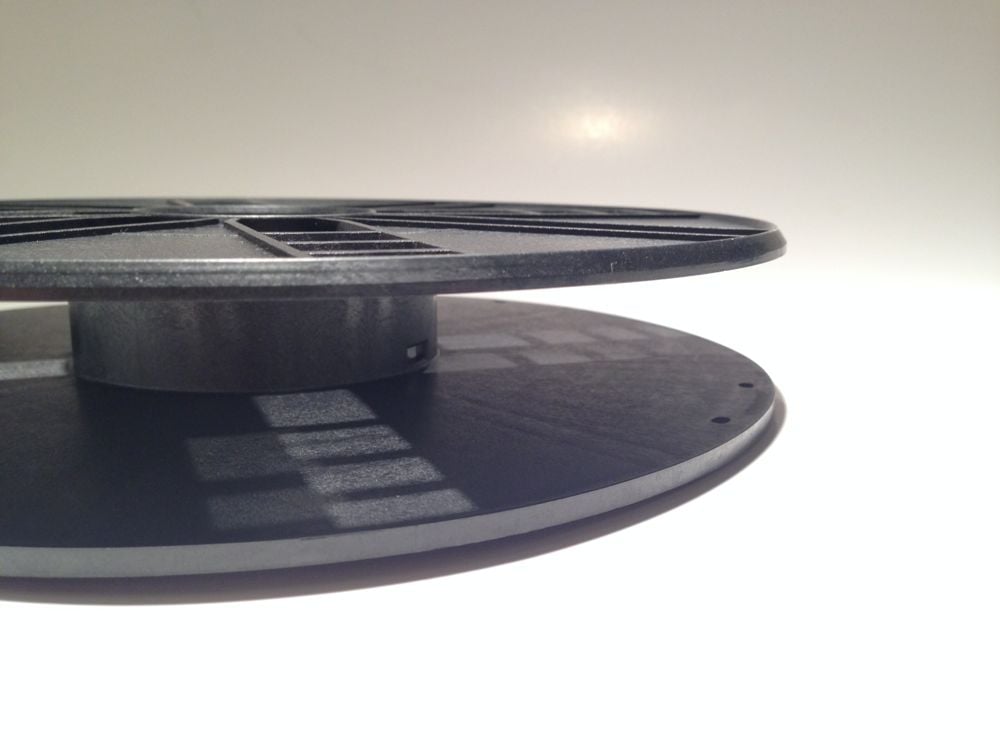
Filament management turns out to be an important task when using plastic extrusion personal 3D printers.
The major issue is, of course, running out of filament in mid-print. There’s few things more frustrating than checking out the progress of the overnight print, only to discover the machine has been “air printing” for the last two hours because it ran out of filament.
While some more advanced 3D printers can handle this situation, namely MakerBot’s new 5th gen extruder, 3D System’s specialized cartridges and various high-priced industrial machines, your typical personal 3D printer has no idea that the spool is about to empty.
There’s a couple of solutions you might consider, both of which require extra work on your part.
The first solution is proactive. Your 3D printer slicing software no doubt tells you the estimated weight of the print. Then weigh the spool and see if you have sufficient filament. Be sure to subtract the weight of the empty spool – and this is a good reason to keep one empty spool handy. We’d recommend having at least 5-10% more plastic on the spool than the slicing software suggested to account for variance.
The second solution is a bit more problematic, but can be used if you forgot to deal with the first approach. Simply watch the print progress. When the print gets dangerously close to running out of plastic you can, on the fly, swap the spool. It may take some careful actions. Basically you observe the tail end of the first spool’s plastic proceed into the extruder and precisely push the head of a new spool into the extruder following the same path. It’s also possible to change colors using this approach. Once the new spool is being correctly fed, mount it on your hub to continue feeding for the remainder of the print.
Our suggestion: plan the print and put the right sized spool on first.

